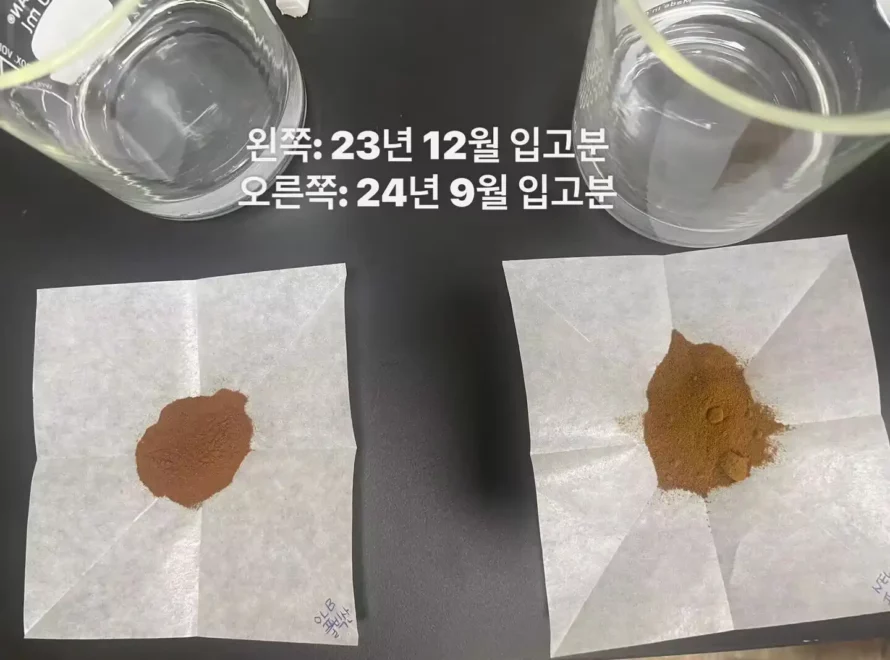Humic acid is a naturally occurring organic compound found in soil and other natural environments. It is also used as a fertilizer and as a food additive.
How does humic acid keep water in soil?

If the soil contains only fine sand and water, the sand can easily disintegrate. Humic acids is the binder that keeps the sand from disintegrating. If water is injected into the sand, either the temperature will rise and the water will evaporate quickly, or the water will seep away quickly.
However, if humic acid is added to sand and water, on the one hand, the evaporation of water is reduced, and on the other hand, the loss of water is reduced, especially the water molecules that have a deep affinity with humic acid. If the same amount of sand and humic acid are mixed, the mixture can not only absorb more water, but also the water is not easy to run off. Humic acid can make the soil form a certain supporting force to support the growth of crops. Therefore, humic acid is a water-retaining agent for soil.
How does humic acid activate the soil mineral elements?
 Humic acid has a strong chelating ability, can chelate almost all the nutrients needed for plant growth. For example, there are a lot of carbonate ions in the soil, and calcium ions needed for plant growth are easily attracted by carbonate ions to form calcium carbonate.
Humic acid has a strong chelating ability, can chelate almost all the nutrients needed for plant growth. For example, there are a lot of carbonate ions in the soil, and calcium ions needed for plant growth are easily attracted by carbonate ions to form calcium carbonate.
But if there is humic acid, the situation is different, humic acid will firmly lock calcium ions. Prevent it from contacting with carbonate ions, so that calcium ions will not be fixed, and free calcium ions will be absorbed by plants, thereby increasing the calcium required for plant growth. The same goes for other nutrients, such as magnesium and zinc.
How humic acid adjusts the acidity and alkalinity of soil?
In recent years, the excessive use of chemical fertilizers in farmland has caused the soil to be either acidified or salinized. Acids are neutralized by bases, and bases are conditioned by acids.
In chemical experiments, there is a class of substances called “pH buffers“, which have both acidic and basic properties.When an acid is added to a buffer, the buffer exerts its own basicity, neutralizing the effect of the acid, making the acidification very slow. Humic acids is one such buffer.
In fact, humic acids can perform well in acidic soils, the key is that they can chelate toxic aluminum ions. The experimental data shows that the content of aluminum ions in acidic soil is excessive, and the humic acid can wrap the aluminum ions and prevent the aluminum ions from contacting the plants. Similarly, there are heavy metals such as lead, cadmium, and so on. The unique properties of humic acid make it a soil detoxifier.
How does humic acid increase ground temperature and help crops withstand cold?
 Because the humic acid fertilizer is black, it can deepen the color of the soil, increase the absorption of sunlight by the soil, and increase the ground temperature.
Because the humic acid fertilizer is black, it can deepen the color of the soil, increase the absorption of sunlight by the soil, and increase the ground temperature.
The organic carbon in humic acid provides an abundance of nutrients for beneficial soil microorganisms, promotes microbial decomposition activities, and generates heat to increase the ground temperature by 1°C to 3°C. Thereby enhancing the cold resistance and frost resistance of crops.
At the same time, the humic acid fertilizer can promote the development of the root system of crops, enhance the absorption capacity of the root system to nutrients, and the plant grows robustly, thereby improving its resistance to low temperature.
How does humic acid improve the permeability of cell membranes?
 To give a similar example, we often envy some people who don’t get fat no matter how much they eat, but it’s easy to gain weight when we eat something. One reason for this is the different absorption capacity of the gut.
To give a similar example, we often envy some people who don’t get fat no matter how much they eat, but it’s easy to gain weight when we eat something. One reason for this is the different absorption capacity of the gut.
We both eat two breads, a thin person can absorb one after digesting it, and a fat person can absorb two. Fertilize crops with 10 kg of compound NPK fertilizer. Some crops with strong absorption capacity can absorb 5 kg, while crops with poor absorption capacity can only absorb 1 kg. That cause the corresponding growth and yield will be different.
The most powerful point of humic acid is that it can improve the permeability of cell membranes and make it easier for nutrients to enter cells. Thereby, the absorption of nitrogen, phosphorus and potassium by root cells is accelerated. So that the original absorption of one kilogram becomes the absorption of 3 kilograms.
How can a person recover from anemia?
- Strengthen nutrition and eat well.
- Supplement iron to improve hemoglobin activity.
- 3.The same blood type blood transfusion.
Which is faster? Obviously the third.
When a plant is weak and needs to be supplemented with nutrients, how to make it recover faster?
- Supplement nutrients such as nitrogen, phosphorus and potassium;
- Provide enough water and carbon dioxide to increase the production of photosynthesis;
- Directly provide the lignin protein carbohydrates needed in the body and so on. Which is faster? Obviously the last one.
Therefore, as long as the humic acid substances are absorbed (absorbed by leaves and roots), it will be easily converted into lignin that is difficult for crops to synthesize. And the growth of crops will be restored. Lignin is a very difficult substance to synthesize in plants. Once the supply is sufficient, you will find that the surface of the fruit, leaves and stems is smooth and shiny. There is a theory internationally that humic acid is transformed from the lignin.
What is the essential principle of using humic acid to increase production?
 Everyone hopes that crops will increase in yield, so what is the essence of increased yield?
Everyone hopes that crops will increase in yield, so what is the essence of increased yield?
There are two ways: one is to increase the number of cells; the other is to increase the volume of cells. It happens that humic acid has a role in both of these aspects.
The focus here is on cell enlargement. Everyone knows that it is not easy for plant cells to elongate and become larger. Because plant cells have cell walls, and once the cell walls are formed, the volume of the cells is basically fixed. This is very similar to snake molting. For a snake to grow, it must shed the layer of skin that limits its growth. But plant cells cannot shed their cell walls, so the cell walls fundamentally limit the size of the cells.
But the cell wall is not formed in an instant, it is not long after a certain period of time. Specifically, a lot of proline will be bound to the cell wall, and these proline will become hydroxyproline with the participation of ferrous ion (Fe2+) after binding to the cell wall. When the accumulation of hydroxyproline increases to a certain extent, the cell wall will not grow. (Meaning that excess iron will cause cells to become smaller and plants to be stunted and stunted).
So, in order to keep the cell wall growing, reducing the accumulation of hydroxyproline is the key. Humic acids just likes to hug iron ions, making ferrous ions and proline (Fe2+) less accessible, reducing the formation of hydroxyproline. The longer time the cell wall grows, the larger the plant cell volume will be. In addition, humic acid entering into cells can also increase enzyme activity, promote protein synthesis and other functions.
In short, the application of humic acid is of great benefit to the growth and yield of crops. It is recommended that farmers friends can use humic acids when crops emerge, water and fertilize. It will give you full surprises.






